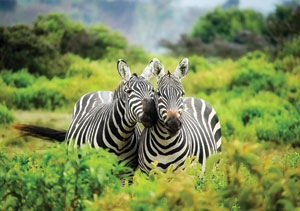Wildlife and Forest Crime
You are here : Home / What We Do / Wildlife & Forest Crime
Preventing Corruption Within Wildlife Authorities

In 2015, Kenya and most of East Africa was experiencing a wildlife-poaching crisis, seeing numbers in flagship species deteriorating by the day. In the media, corruption in the wildlife sector was indicated as the main enabler of wildlife crime. Wildlife authorities being accused of being corrupt, and of facilitating the illegal wildlife trade. The public and civil society at large also identified corruption as a key factor enabling wildlife crime and illegal trade.
In response to this, UNODC began working with the Kenya Wildlife Service (KWS) in strengthening internal mechanisms and systems to better prevent future occurrences of corruption from taking place.
The KWS pilot project utilized a risk mitigation approach. Recognizing that corruption occurs in many shapes and forms, and that there is not one specific way in which it manifests itself. It does however always involve people and systems.
The Project Process
The Preventing Corruption Within Wildlife Authorities project utilizes a three-step approach. First bringing a working group of senior managers together to identify and prioritize risk areas which the institution may be vulnerable to.
The working group then develop risk mitigation strategies which are detailed and systematized with the view of closing the root cause of the risk area.
Finally, a Corruption Prevention Committee (CPC) is established within the institution. It ensures ownership and implementation of the risk mitigation strategies developed. Often this Committee is composed of the senior managers who developed the risk mitigation strategies.
Experiencing positive results working with the Kenya Wildlife Service CPC, UNODC expanded the project to several areas. These were Tanzania’s Ngorongoro Conservation Area Authority (NCAA) and the Botswana Department of Wildlife and National Parks (DWNP) in 2017. The Uganda Wildlife Authority (UWA) also came on board in 2018. Through the expansion, common risks to all wildlife authorities came to light. They came with differing risk mitigation approaches as outlined by the respective CPCs.